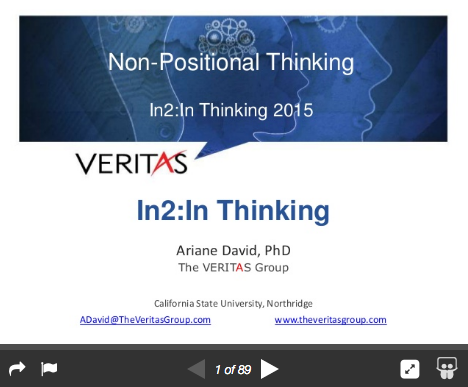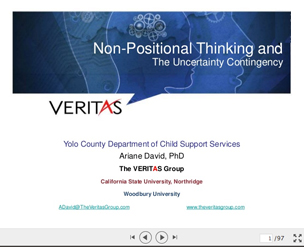It’s Time … Not a Closet
Getting the Most Out of How We Use Time
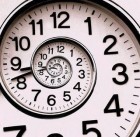 It’s a funny thing about closet space, the more we have, the more we fill. And, when we run out of space we think, I need more closet space or I need a clever way of stuffing more into the space I have.
It’s a funny thing about closet space, the more we have, the more we fill. And, when we run out of space we think, I need more closet space or I need a clever way of stuffing more into the space I have.
So we refold, reorganize, vacuum seal and even throw some stuff away.
Sometimes, a week later we discover that we really wish we had some of the stuff we got rid of.
Time is Like Closet Space
Time is like closet space: we fill up the time we have, discover we haven’t enough, and start reorganizing and dumping, all the while getting more and more stressed.
We make small phone calls between big appointments or have meetings on the way to the car. We’re told to fill in little bits of open time by reading email and doing short tasks, and our lives start taking on the look of a Byzantine mosaic. But the truth is, in the end we still haven’t time for what’s really important. Worse even, we discover that some of the things we deleted from our calendars because there wasn’t time, are exactly the things we like. What we’re left with is a lot of “necessary” but grindingly un-meaningful stuff.
For all the talk we hear about “mastering time”, in the end time cannot be mastered.
Time just is. It’s the fourth dimension, and it’s even more enigmatic than the first three.
Physicists can’t agree on what it is or how it works. We can’t understand it and we can’t control it. The best we can hope for is some degree of control over how we operate within it.
In other words, we cannot master time we can only master our own behavior.
Knowing What’s Important is Tricky
Making the best use of time doesn’t mean finding ways of cramming more into our already bursting schedules. It’s not about knowledge management software or smart phone organizers, or another system we have to make time to learn to use. What it is about is discovering what’s important, in the long term as well as the short, and how to attend to it.
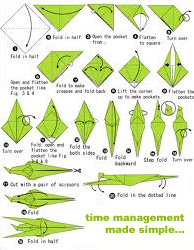 Knowing what’s important is tricky, since it requires that we know what we value – not easy in a world that continually pounds us with all sorts of things we’re told we should value, even if we don’t. These things usually take money so we fill our time with work in order to be able to afford them.
Knowing what’s important is tricky, since it requires that we know what we value – not easy in a world that continually pounds us with all sorts of things we’re told we should value, even if we don’t. These things usually take money so we fill our time with work in order to be able to afford them.
A good way to sort out what’s really important in your life is to ask the question, “When I’m very old and looking back over my life, what do I want to have done?”. Ask, “At that will make me say, ‘I did what I came to do. I have lived a good life?’” That’s what’s important.
At work the situation is a little different. There’s a whole bucket of things screaming to get done. They range from important and urgent to not important and not urgent and everything in between. Generally what’s not important and not urgent is pretty obvious and fairly easy to avoid. The things that usually get our attention are what scream the loudest even if they’re not important. These urgent but not important things shove the quieter important but not urgent things off to the side, but not forever. The neglected important things grow up to become urgent important things usually requiring much more time and energy than they did initially.
The Big Questions
The big questions for figuring out what’s important at work are , “What is my mission, i.e., what is the goal of my work, which if accomplished would mean I was successful?” Answering this question means making some decisions about what “successful” means: does it mean promotion, or doing a good job, or more money, or loving what you do, or making a difference in someone’s life? The next question is, “What are the tasks and milestones that are critical to accomplishing that goal?” The answer to the last question represents mission-critical activities, and they are what’s important to your work.
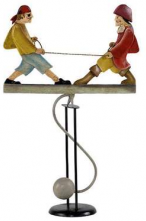 Figuring out what’s important is the first and hardest step. Then it’s time to step back and see if your current priorities are in agreement with what’s most important in your life and work. If you feel that time is swinging you around by the hair, chances are they aren’t.
Figuring out what’s important is the first and hardest step. Then it’s time to step back and see if your current priorities are in agreement with what’s most important in your life and work. If you feel that time is swinging you around by the hair, chances are they aren’t.
The next step is a little simpler: examining your activities to see if they support what’s really important. In business this means looking at all the tasks you have to accomplish and ranking them by how much they each contribute to your mission. The higher the ranking the higher the importance, so this is where you put your attention and time first.
High Leverage Activities
There’s another class of activities, called high leverage activities, that are important because they deliver the biggest value for a relatively small input of time and energy. They’re often hard to see because they tend to be the quiet important things. These activities include cultivating relationships, knowledge, health and resources. At work that could mean developing relationships with mentors, superiors, peers and subordinates, developing job knowledge and skills that go beyond your present job, and training employees. In terms of family, there no higher leverage activities than developing strong and trusting communication with your children.
In the final analysis what’s important is finding a balance that allows us to get the most satisfaction out of both work and our private activities. Since, unlike closets that we can simple add on to if necessary, we have to make do with twenty four hours in a day, no more, no less. How we use this time and whether or not we use it in meaningful ways to a large degree up to us.

